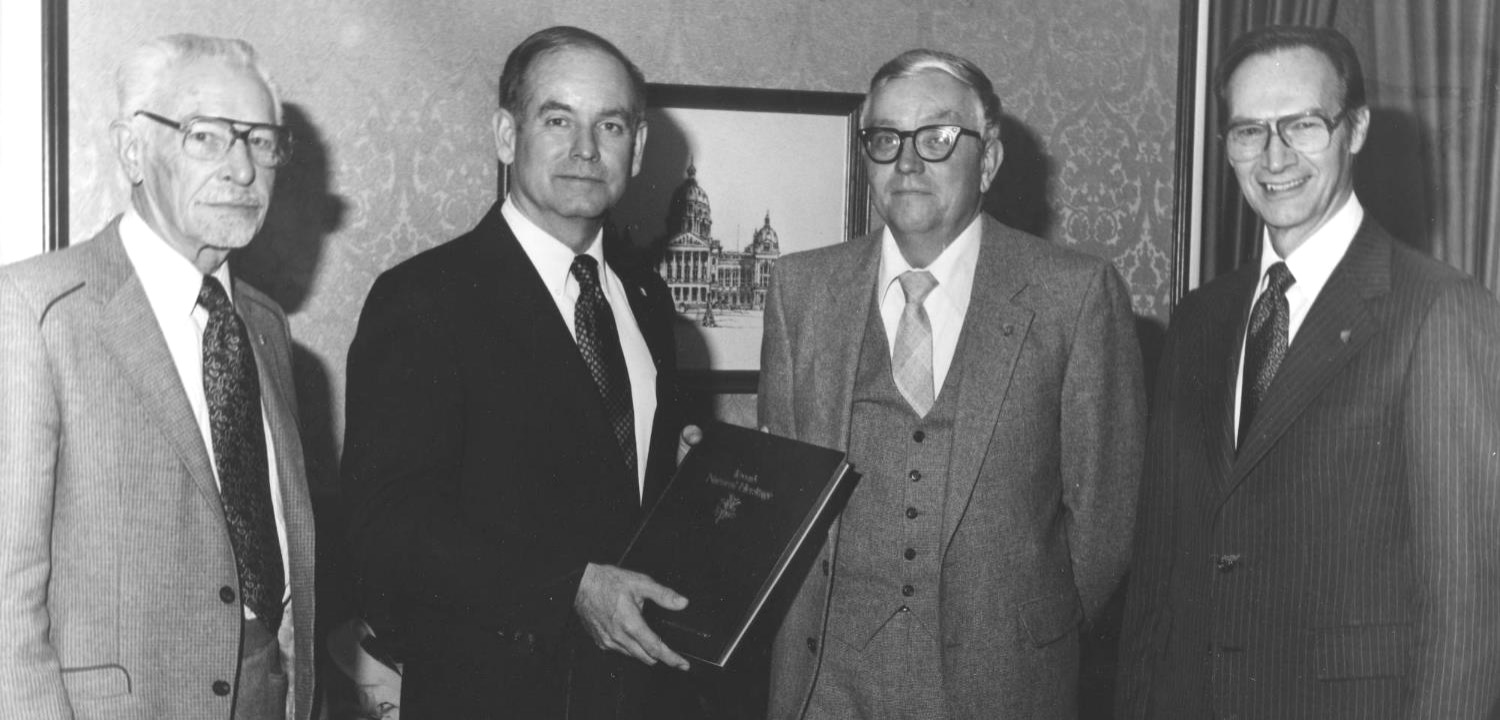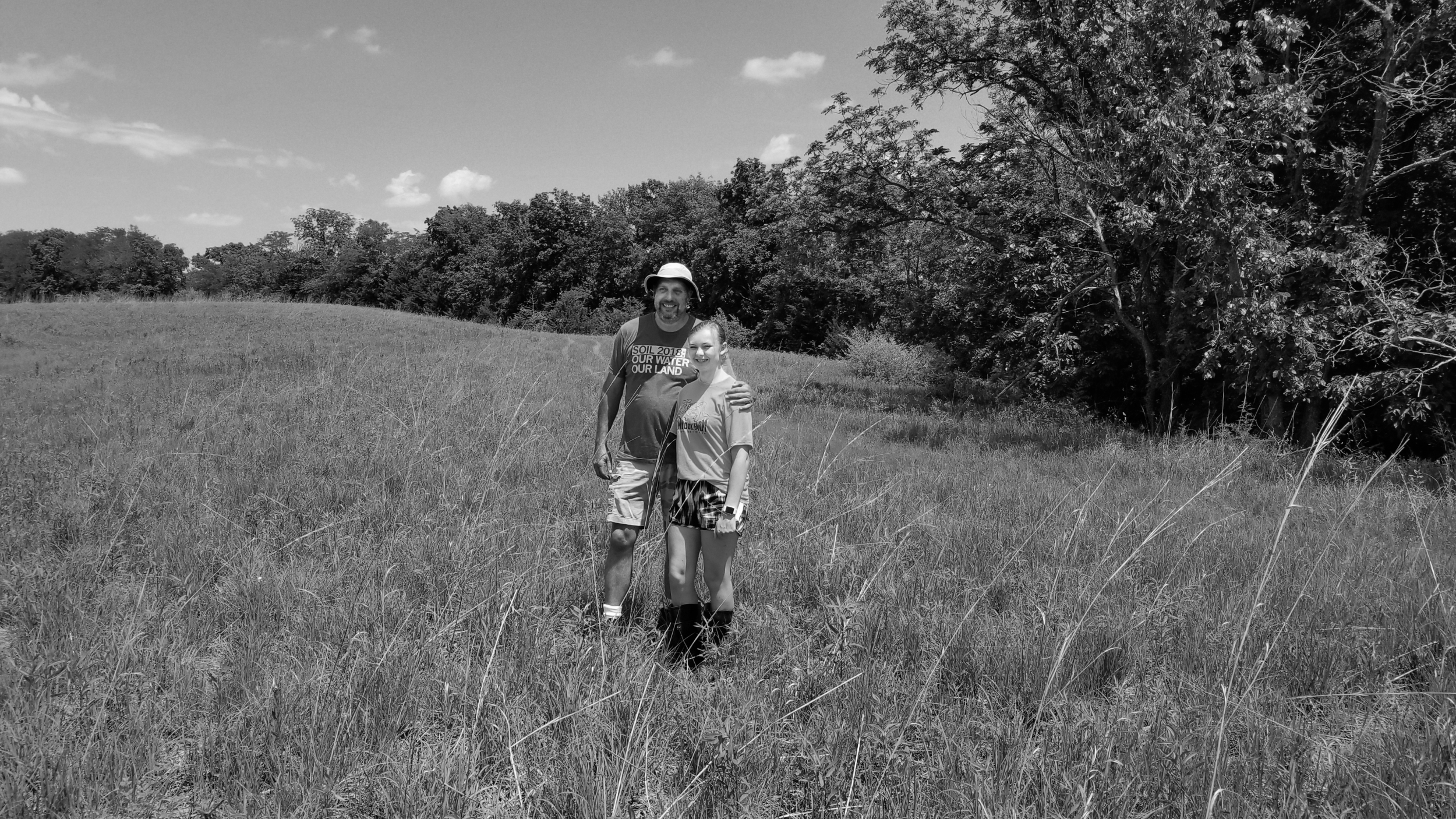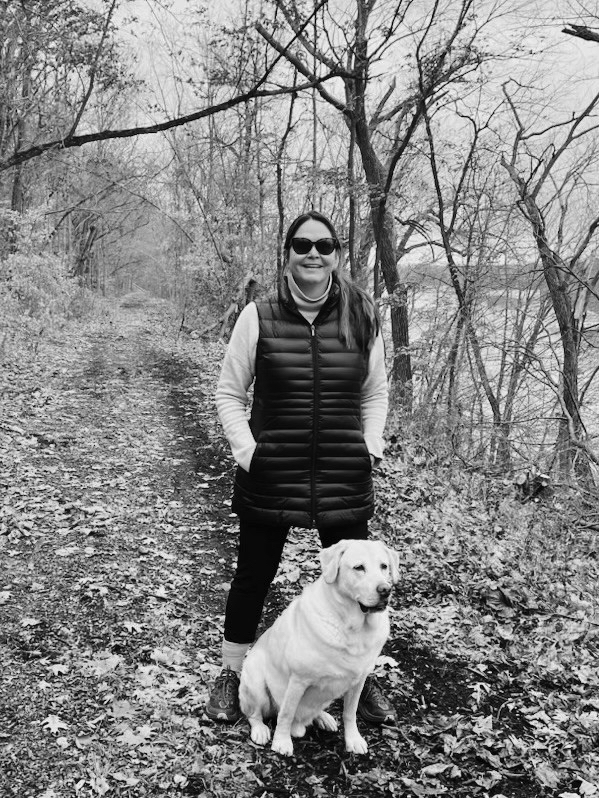Rooted in Service
By Susan Shullaw on June 18, 2024 in Blog
An acorn that falls on fertile ground will first dig a taproot deep into the soil. When firmly anchored, the plant will send green shoots skyward, beginning its decades-long transformation into a towering oak.
 The oak became Iowa’s official state tree in 1961. Not quite 20 years later, then Governor Robert Ray called together a dozen prominent Iowa citizens who became the “roots” of Iowa Natural Heritage Foundation. Led by Bob Buckmaster of Waterloo and Bill Brenton of Des Moines, this initial group served as INHF’s first Board of Directors. The board soon expanded to include more than 30 community, business and industry leaders from across the state, so that a larger number of Iowans could play a role in this new endeavor.
The oak became Iowa’s official state tree in 1961. Not quite 20 years later, then Governor Robert Ray called together a dozen prominent Iowa citizens who became the “roots” of Iowa Natural Heritage Foundation. Led by Bob Buckmaster of Waterloo and Bill Brenton of Des Moines, this initial group served as INHF’s first Board of Directors. The board soon expanded to include more than 30 community, business and industry leaders from across the state, so that a larger number of Iowans could play a role in this new endeavor.
In announcing the formation of INHF in May 1979 “for the protection of natural resource lands in Iowa,” Governor Ray expressed concern for how quickly Iowa’s natural heritage was disappearing. Important and threatened natural lands – including wetlands, forested areas, river corridors, lake shorelines, and prairies – were being offered for sale, and the Iowa DNR and county conservation boards, which protect recreational land and nature preserves across the state, could not act quickly enough to purchase and protect them.
“We believe this private group [INHF], which will be able to preserve natural areas for the benefit of all Iowans, will be doing a great public service to our State, its citizens, and future generations who will live here,” Governor Ray said.
.jpg) Among the original INHF governing body was Des Moines attorney Dick Ramsay. He was the board’s first secretary and helped file the necessary nonprofit paperwork. Now, 45 years later, Ramsay is still an active INHF board member – a very deep taproot indeed. His decades of service illustrate some of the ways in which the INHF board differs from those of other nonprofits.
Among the original INHF governing body was Des Moines attorney Dick Ramsay. He was the board’s first secretary and helped file the necessary nonprofit paperwork. Now, 45 years later, Ramsay is still an active INHF board member – a very deep taproot indeed. His decades of service illustrate some of the ways in which the INHF board differs from those of other nonprofits.
“From the very beginning, INHF has needed and wanted input from the board on the operation of the organization, which is not all that common,” Ramsay says. “Often times, a board’s main responsibility is to raise money. But at INHF, board members are much more involved in working with staff on the operation of the organization, and board members absolutely love it.”
Given the complexity of many INHF land projects, Ramsay explains, it can often take new board members several years to fully understand the various funding mechanisms, land protection tools, easement requirements, and other aspects of INHF’s core work. That’s among the reasons INHF has chosen not to impose board member term limits. Ramsay himself, who’s as passionate today about INHF and its mission as he was four decades ago, illustrates the wisdom of this approach: often, the longer one serves, the greater their worth to the organization.
Another long-term board member is landowner and family farm manager Carole Reichardt of Clive, who agrees with Ramsay’s observations. “The deep level of involvement between board and staff has been the biggest difference I have experienced from other boards,” she says.
“In my 32 years on the INHF board, many of the faces have changed but the culture of the board and organization has remained solid,” says Reichardt. “I believe this is because there has always been a pervasive level of respect between staff and board. Both are centered on a sincere commitment to protecting and restoring Iowa’s land, water and wildlife for future generations.”
 Geographical and occupational diversity are other hallmarks of the INHF board, whose 34 members represent every corner of the state, and bring valuable experience and expertise from multiple perspectives. Seth Watkins, who farms and raises cattle near Clarinda in southwest Iowa, joined the INHF board in 2019, after INHF helped him place a conservation easement on his farm.
Geographical and occupational diversity are other hallmarks of the INHF board, whose 34 members represent every corner of the state, and bring valuable experience and expertise from multiple perspectives. Seth Watkins, who farms and raises cattle near Clarinda in southwest Iowa, joined the INHF board in 2019, after INHF helped him place a conservation easement on his farm.
“INHF has a level of integrity and diligence that has really impressed me,” Watkins says. “Its ability to maximize donor investment in protecting land helped drive my decision to serve on the board. I appreciate that INHF has given me a platform to advocate for land protection.”
 Gilda Boyer, an attorney from Cedar Rapids, joined the board in October 2022. “I have loved the outdoors my entire life,” she says. “I was the kid who spent her time in the woods running around, skating on the creek in the winter. Today I dig in my garden and enjoy my 30 acres of restored prairie and woodlands. INHF seemed a natural extension of that passion, allowing me to serve an organization that works to conserve and preserve our beautiful Iowa countryside.”
Gilda Boyer, an attorney from Cedar Rapids, joined the board in October 2022. “I have loved the outdoors my entire life,” she says. “I was the kid who spent her time in the woods running around, skating on the creek in the winter. Today I dig in my garden and enjoy my 30 acres of restored prairie and woodlands. INHF seemed a natural extension of that passion, allowing me to serve an organization that works to conserve and preserve our beautiful Iowa countryside.”
Working collaboratively, INHF board and staff members problem-solve, share expertise, offer guidance and also take time to have fun. Many board members will count among their most enjoyable INHF experiences the staff-led tours of INHF-protected properties, or the informal group dinners and social hours that allow board and staff to know one another better.
But those interactions steer clear of politics. From the outset, Governor Ray and other founders envisioned INHF as a nonpartisan organization. When INHF board meetings convene, members leave their political affiliations at the door. As the INHF team likes to say, “We speak for nature,” because nature doesn’t have a voice or a vote in its future.
What nature does have, as demonstrated by the individuals who make up the INHF board, are multiple points of entry. Some have come to their love of nature through agriculture; others as hunters, hikers, boaters, bicyclists, birders or environmental educators. Despite differences in age, background and occupation, members of the INHF board come together to serve a common purpose.
Just like the acorn that needs more than soil and sunlight to grow, protecting Iowa’s natural heritage requires the knowledge, passion, and commitment of a diverse board to ensure that INHF fulfills Governor Ray’s charge: to preserve natural areas for the benefit of all Iowans and future generations.